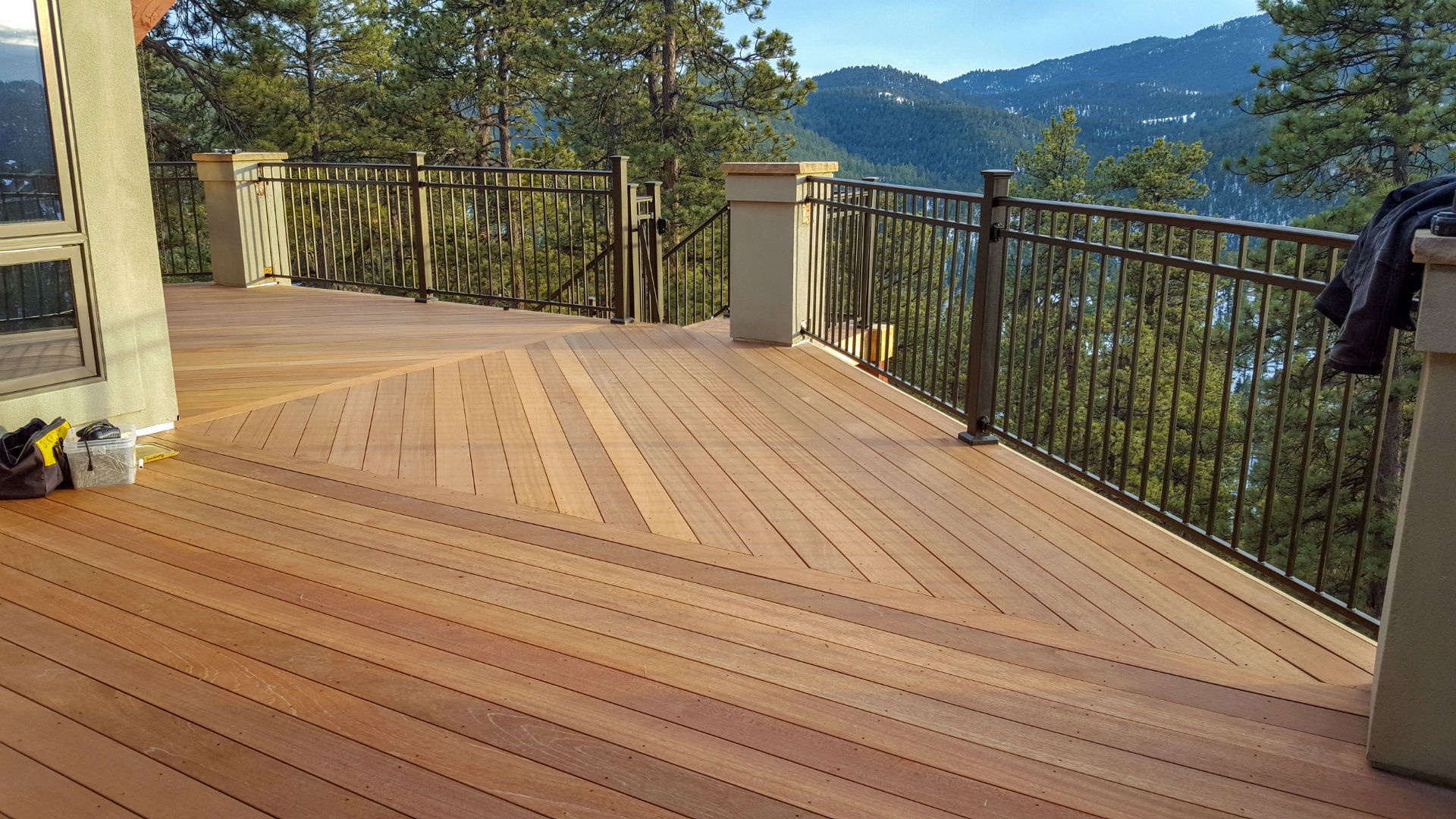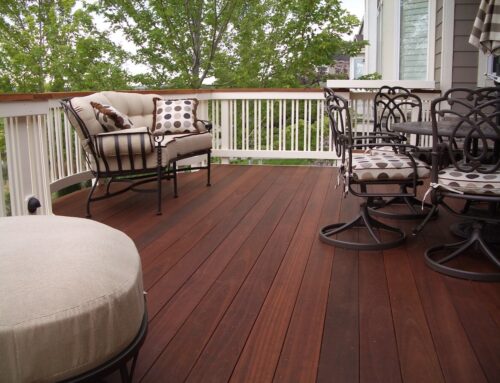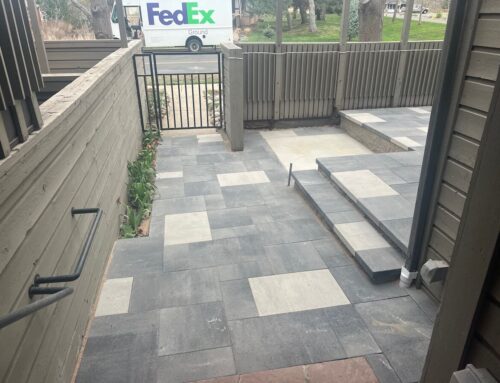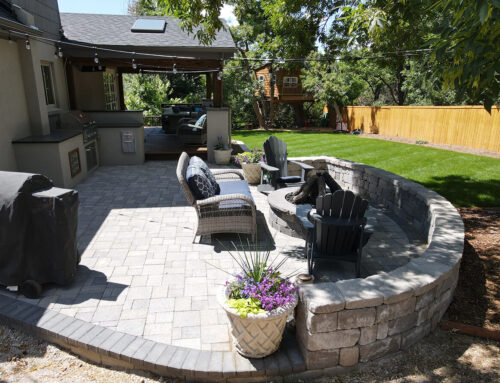With decks such an important space in today’s homes, it makes sense for quality-conscious homeowners to seek out premium materials to enhance the appeal and durability of their outdoor living additions. Clients are rediscovering the unique qualities and value of certain tropical hardwoods like red balau mahogany and ipe (pronounced “ee-pay”). In addition to the rich, natural beauty, longevity and scratch resistance of these hardwoods, Colorado’s increasing frequency and severity of hail storms make ipe and mahogany great choices.
There can be a lot of confusion about the names of these materials. Like cedar, pine and other types of wood, there are many different varieties of mahogany, and many different common names, in addition to the scientific botanical names. For example, ipe is also referred to as Brazilian walnut, Brazilian redwood, and ironwood.
(Start Planning: DeckTec’s Buyer’s Guide)
While there are many other types of hardwood available, DeckTec focuses on mahogany and ipe because of their overall availability and because of their availability in the specific dimensions of lumber needed for our custom construction projects.
Ipe
Ipe, you’re probably asking? Not exactly a household word, at least not yet! Ipe is found in South America and some parts of Central America and has some rather remarkable natural characteristics. It’s typically used for decking and fine outdoor furniture and indoors for floors and cabinetry.
While most homeowners have never heard of ipe, readers of our last newsletter learned that the seats at Red Rock Amphitheatre are made of this extremely stable and long-lasting material. In addition, the original Coney Island Boardwalk, built in 1923, as well as the upper deck at Coors Field were made of the variety.
(Related: Where Has All the Redwood Gone?)
Ipe is one of the densest woods available. In fact, Ipe is so dense that unlike most wood it doesn’t even float. It’s also flame-resistant, with the same resistance rating as concrete and steel, as unbelievable as that may sound, which makes it particularly appropriate for our dry, fire-prone Colorado areas in the mountains and along the Front Range.
Like redwood, ipe naturally contains an oil that functions as an insect repellant. Resistant to mildew and decay, ipe can reasonably be expected to be the longest-lasting decking material available. With proper care, some experts assert that it can last up to 50 years. Now with that kind of durability, you can plan your deck parties way in advance!
It’s no wonder that ipe has become increasingly popular in recent years as a material of choice for upscale builders, interior designers, and of course, creators of premium outdoor living environments such as DeckTec.
Mahogany
While ipe is obviously top-of-the-line, if you’re looking for something a little more affordable, look no further than red balau mahogany. Red balau is sustainably grown on well-managed plantations in Indonesia and is known for its dark, rich reddish-brown color. It’s noticeably smooth to the touch and adds distinctive style and chic to any deck. Red balau is comparable to maple in density, is scratch-resistant and is second only to ipe in hardness among the decking woods we use. And like ipe, red balau is naturally insect and rot resistant and doesn’t require chemical treatment.
In addition to decks, mahogany has long been used for quality furniture, beautiful exterior doors and window frames, millwork—and even boats.
Bottom Line: You just can’t go wrong with either of these premium woods!






Leave A Comment